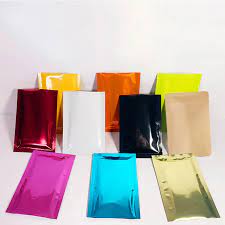Ziplock bags are functional, convenient, and all-pervasive in families and market sectors globally. From keeping meals to organizing tiny items, these resealable plastic bags offer you a great number of uses. Here’s all you should understand about ziplock bag (ถุงซิปล็อค).
1. Roots and Design: Ziplock bags (ถุงซิปล็อค) were invented by Borge Madsen inside the past due 1950s. In the beginning created from polyethylene, they feature a distinctive interlocking closing program, comprising two plastic material pieces with interlocking lines that close off the bag when pressed jointly.
2. Overall flexibility: Ziplock bags come in different dimensions, designs, and thicknesses to match diverse requirements. These are frequently used for meals storing, travel organization, and packing goods such as expensive jewelry, electronic products, and cosmetics. In addition, they are generally employed in health care configurations for specimen travelling and storage due to their airtight seal off.
3. Rewards: The principal benefit from ziplock bags is their resealable nature, allowing for convenient entry and continuous freshness. They are also long lasting, reusable, and transparent, permitting customers to determine contents easily. In addition, they may be reasonably priced and readily available, which makes them a staple in homeowners and companies.
4. Environment Considerations: While ziplock bags offer you comfort, their throw away mother nature raises environment worries. Most ziplock bags are manufactured from non-bio-degradable supplies, bringing about plastic-type contamination. However, some businesses develop biodegradable and compostable alternatives, mitigating their environment influence.
5. Correct Consumption: To maximize the potency of ziplock bags, correct consumption is crucial. Ensure the contents are free of moisture and free of well-defined physical objects which could puncture the bag. When securing, click across the closing to get rid of unwanted oxygen and make a limited close. Furthermore, content label bags with materials and schedules for quick detection and rotation.
6. Washing and Routine maintenance: Ziplock bags may be washed and reused several times, minimizing waste. Clean these with cozy, soapy water, wash thoroughly, and atmosphere dry before reuse. Stay away from severe substances or revealing these to high conditions, as this can degrade the plastic-type material and give up the close off.
7. Security Considerations: Whilst ziplock bags are typically safe for food items storage, it’s necessary to rely on them appropriately. Prevent microwaving or very cold meals in non-meals grade bags, because this can release harmful substances in the food. Additionally, generally dispose of bags with noticeable signs and symptoms of injury or dress in to stop pollution.
To summarize, ziplock bags are versatile, handy, and widely used for a variety of reasons. By comprehending their origins, positive aspects, proper use, and environmental influence, end users can make informed options to maximize their power while lessening waste.
